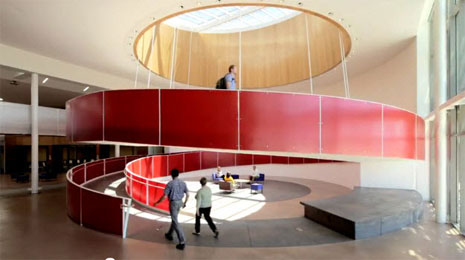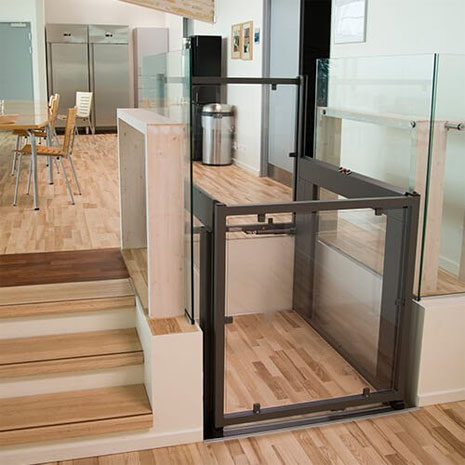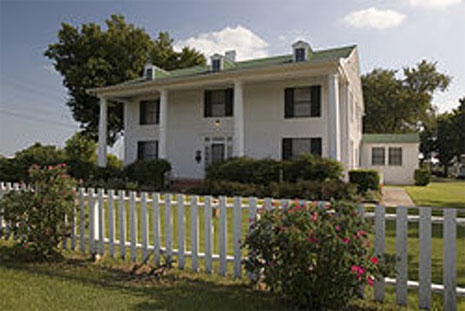When is an elevator required?
The ADA Scoping section 206.2.3 Multi-Story Buildings and Facilities requires that there will be an accessible route connecting all stories or mezzanines in a multi-story building:
“206.2.3: At least one accessible route shall connect each story and mezzanine in multi-story buildings and facilities.”
An accessible route can be provided throught a ramp or elevator. There are some times when the accessible route can be a wheelchair lift, but they are limited to what Section 206.7

This is the Ed Roberts Campus building in Berkley California

This is an example of a platform lift-there are restrictions on when you can use one

This is an example of an elevator. There are also exceptions one can take on what type of elevator you can use.
There is another section of the Standards that requires an accessible route in a n alteration where a new stair is added to connect two stories:
206.2.3.1 Stairs and Escalators in Existing Buildings. In alterations and additions, where an escalator or stair is provided where none existed previously and major structural modifications are necessary for the installation, an accessible route shall be provided between the levels served by the escalator or stair unless exempted by 206.2.3 Exceptions 1 through 7.

In the photo above, the retail store added a stair to connect to the story above. An elevator would have to be provided to connect to the second story. If there is already an elevator in the building outside the store, it is acceptable (although not advisable) to use that elevator. But if the building does not have an elevator, one must be provided inside the store.
EXCEPTIONS: There are certain instances when an accessible route will not be required. Below are some of those exceptions:
ADA Section 206.2.3 EXCEPTION:
1. In private buildings or facilities that are less than three stories or that have less than 3000 square feet (279 m2) per story, an accessible route shall not be required to connect stories provided that the building or facility is not a shopping center, a shopping mall, the professional office of a health care provider, a terminal, depot or other station used for specified public transportation, an airport passenger terminal, or another type of facility as determined by the U. S. Attorney General. ……
This exception is only for privately owned buildings which have two stories only. If they have more than two stories, in order to take the exception each stroy has to be less than 3,000 square feet per story.
But also the exception removes shopping centers or shopping malls. So even if the shopping center is only two stories tall, they must provide an accessible route.

This is a two story shopping center. An elevator will be reqired to reach the second floor
The other exceptions are for public buildings owned by a State or Local government or publically funded.
2. Where a two story public building or facility has one story with an occupant load of five or fewer persons that does not contain public use space, that story shall not be required to be connected to the story above or below.
This means that any public building that is two stories and has more than five occupants on the second story will have to have an elevator connecting the stories.

This is a picture of a municipality office on the second floor which has less than 5 occupants in that floor.
And another exception is of historic buildings that are more than two stories
7. Where exceptions for alterations to qualified historic buildings or facilities are permitted by 202.5, an accessible route shall not be required to stories located above or below the accessible story.
A new lab counter in an existing science classroom is an alteration to an area containing a primary function
Some other exceptions are for residential facilities, multi-story rooms in a transient lodging, detention and correctional facilities, air traffic control towers.
There are other requirements for accessible routes that are beyond the scope of this newsletter, but we will make one in the next few months.







 Abadi
Abadi 
